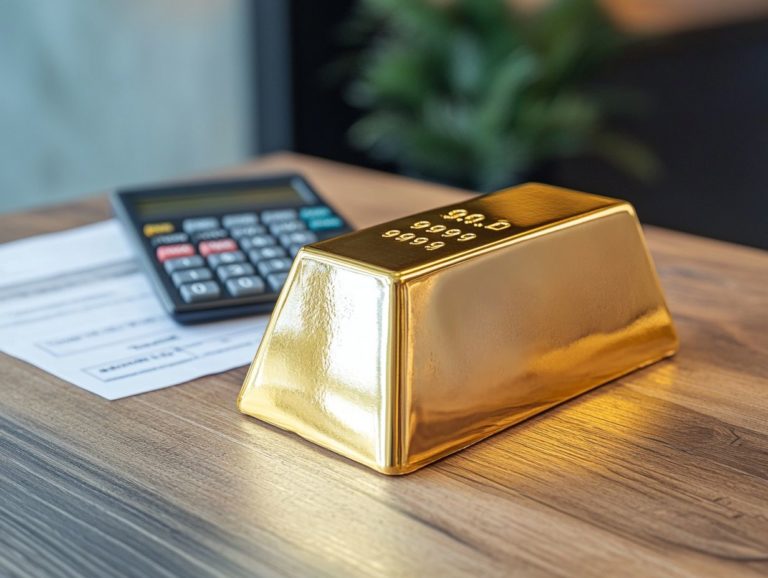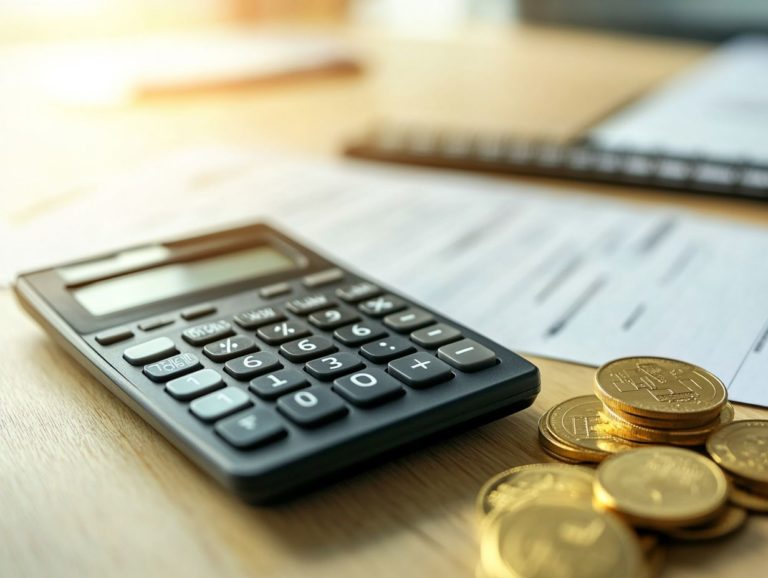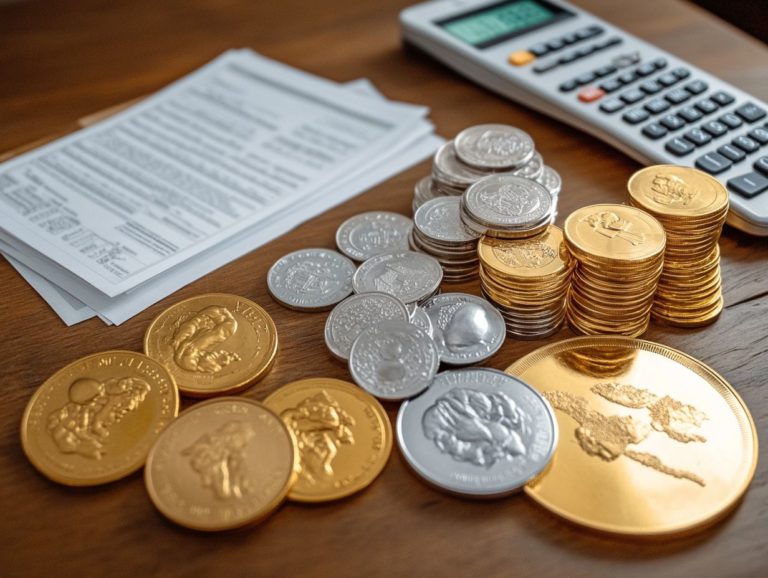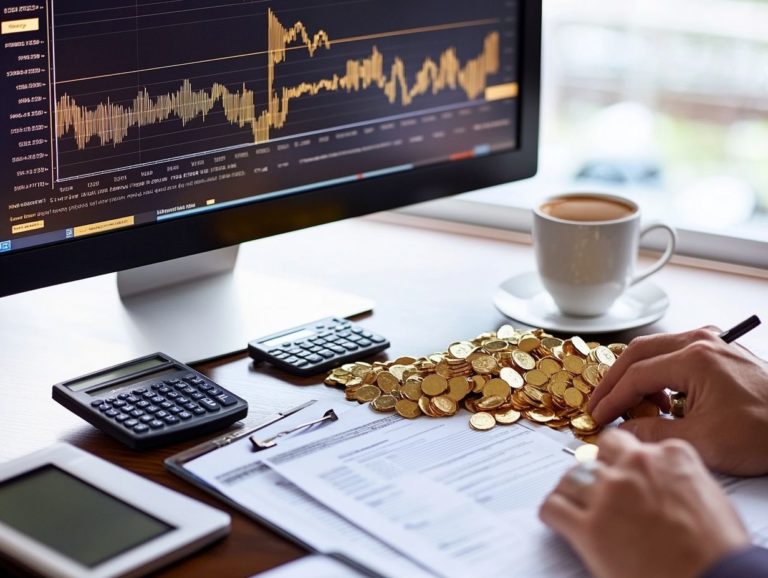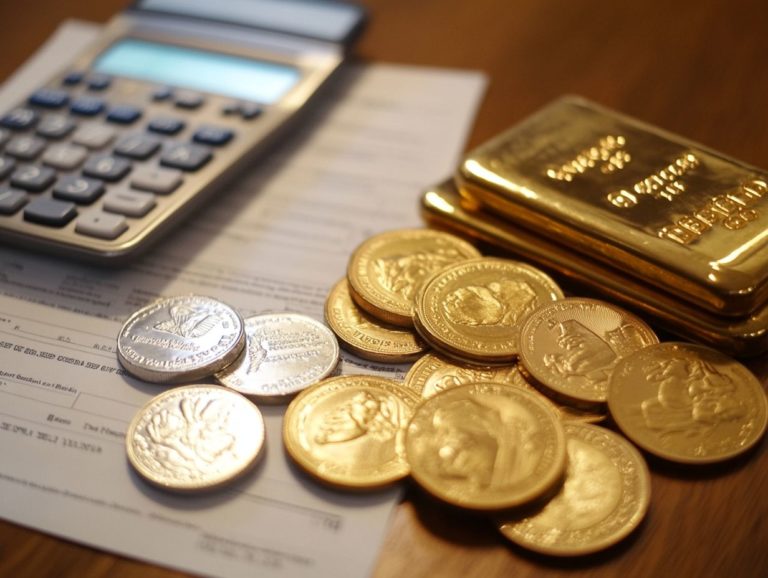Understanding Tax Brackets for Precious Metals Investors
Investing in precious metals can be a rewarding venture. Yet navigating the intricate tax landscape surrounding these investments may feel overwhelming.
Understanding tax brackets is essential for getting the most from your investments and minimizing your liabilities. This guide breaks down the types of taxes applicable to precious metals, explains how tax brackets influence your investments, and offers practical strategies to optimize your tax situation.
Whether you re a seasoned investor or new to the scene, this resource equips you to make informed decisions and avoid common pitfalls.
Contents
- Key Takeaways:
- Understanding the Taxation of Precious Metals Investments
- Understanding Tax Brackets for Precious Metals Investments
- Effective Tax Planning for Precious Metals Investors
- Frequently Asked Questions
- What are tax brackets for precious metals investors?
- How do tax brackets for precious metals investors work?
- What are the different tax brackets for precious metals investors?
- Can an investor lower their tax bracket for precious metals investments?
- What are the tax implications for precious metals investments in a higher tax bracket?
- Are there any tax breaks for precious metals investors?
Key Takeaways:
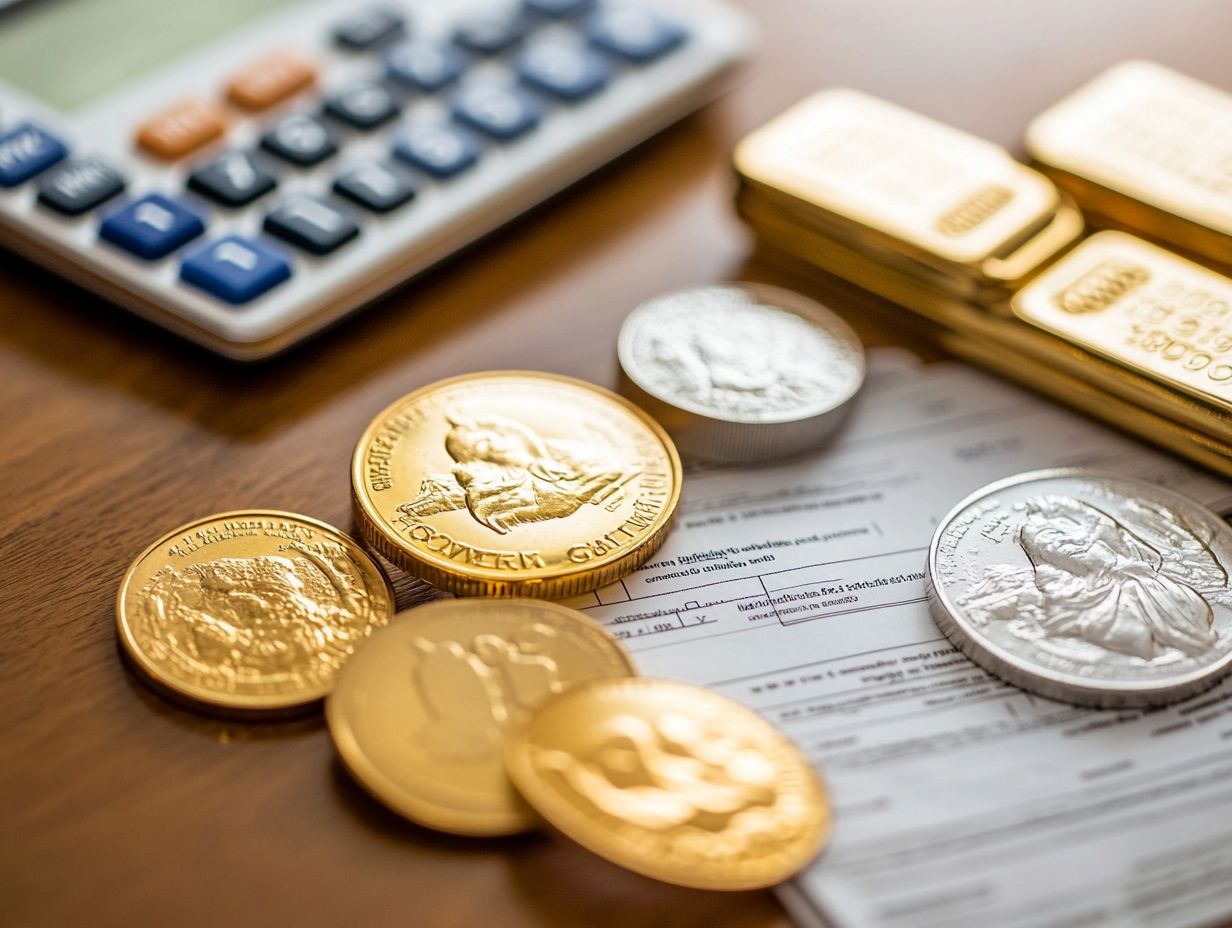
- Understanding tax brackets is crucial for precious metals investors to reduce their tax burden and maximize their profits.
- Precious metals investments may face different types of taxes, including capital gains and income tax, based on the holding period and income bracket.
- Collaborating with a tax professional can help you navigate tax brackets effectively and maximize your tax benefits.
Understanding the Taxation of Precious Metals Investments
Understanding the taxation of precious metals investments is vital for you as an investor aiming to diversify your portfolio and hedge against inflation. As tangible assets, physical gold, silver, and platinum have unique tax implications that can significantly influence your overall investment performance.
It’s essential to grasp capital gains tax rules and the maximum capital gains rate. These rates affect your tax obligations when you sell precious metals. Exploring tax advantages, such as a Precious Metals IRA, can be beneficial as it offers valuable tax deferral and the possibility of tax-free withdrawals. Additionally, understanding the tax code for precious metals investments is crucial for making informed decisions.
Types of Taxes on Precious Metals
When you invest in precious metals, various taxes apply, each with its implications based on the type of investment and your financial situation.
Understanding capital gains tax is essential because it can significantly impact the profit you realize from selling physical gold, silver, or platinum. For example, if you sell a gold coin purchased for $1,000 for $1,500, you’ll face capital gains tax on that $500 profit. Additionally, being aware of tax regulations for precious metals investors can help you navigate these complexities more effectively.
Additionally, state sales tax may apply at the time of purchase, with rates differing by jurisdiction. If your precious metals are classified as collectibles, you may encounter collectible tax rates that add another layer of taxation.
If you trade precious metals frequently, ordinary income tax may also apply. Understanding these tax implications is key to developing smart investment strategies.
How Tax Brackets Affect Precious Metals Investors
Tax brackets significantly impact how capital gains from your investments are taxed. They shape your overall tax liability based on how long you hold an asset and the type of gains you realize.
Long-term capital gains typically those accrued after holding an asset for over a year are generally taxed at lower rates than short-term gains, which are treated as ordinary income. This distinction can profoundly influence your investment strategies.
By understanding these tax implications, you can make informed choices about whether to hold onto your investments for the long term or pursue quicker returns that may incur higher tax costs. Ultimately, optimizing your investment outcomes depends on balancing the timing of asset liquidation with the associated tax consequences.
Understanding Tax Brackets for Precious Metals Investments
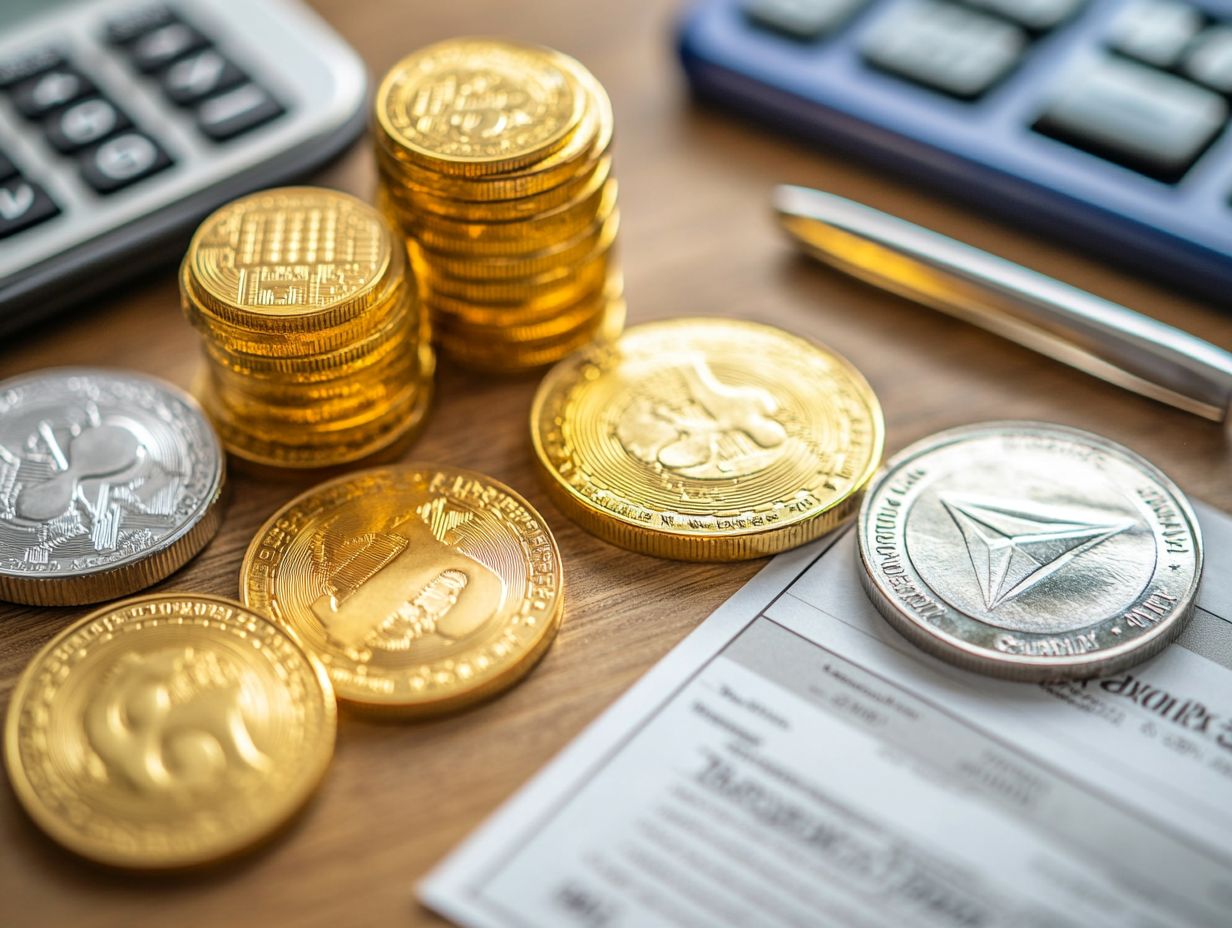
Understanding tax brackets for precious metals investments is key to boosting your earnings! A thorough grasp of the diverse tax implications tied to various investment strategies is essential, especially concerning profit from selling assets and the overall growth of your portfolio.
If you’re investing in physical gold, silver, or platinum, being aware of the tax laws governing these assets is crucial. These laws can significantly influence your net returns.
Enlisting the guidance of tax professionals helps you develop customized strategies that cater to your unique circumstances and investment goals. This approach ultimately optimizes your tax outcomes.
Smart Tips to Slash Taxes on Your Precious Metals Investments!
Implementing effective strategies to minimize taxes on your precious metals investments can significantly enhance your overall returns. Using tools like a Precious Metals IRA allows you to take full advantage of tax benefits.
By exploring various tax deferral options, such as contributing to retirement accounts, you can postpone tax liabilities. This allows your investments to grow without immediate taxation. Additionally, making tax-deductible contributions within these accounts can reduce your taxable income for the current year.
Working with an experienced investment manager is crucial. Their expertise in navigating complex tax laws can unlock more efficient strategies to optimize your tax outcomes. They can guide you on capital gains strategies to minimize liabilities while maximizing your financial growth.
Avoid These Common Mistakes!
Investors in precious metals often face a minefield of common mistakes that can lead to negative tax implications and increased tax liability, especially concerning profits from selling assets and reportable transactions.
Misreporting transactions can happen without you even realizing it. You might undervalue your assets or misclassify the type of sale you re engaging in. A limited understanding of tax liability can complicate matters, as neglecting to document your transactions properly may lead to issues.
If you overlook consulting tax professionals, you could miss out on valuable guidance, resulting in costly errors. Adhering to IRS regulations is essential; by avoiding these common pitfalls, you can ensure compliance and craft more effective investment strategies that maximize your returns while minimizing unnecessary tax burdens.
Effective Tax Planning for Precious Metals Investors
Effective tax planning for precious metals investors is essential for maximizing your financial growth while ensuring compliance with IRS regulations. This is especially important in a landscape marked by fluctuating markets and distinct investment strategies.
By understanding the intricacies of tax implications, you can confidently navigate this complex environment. This knowledge helps optimize your returns and safeguard your investments.
Why You Should Work with a Tax Professional
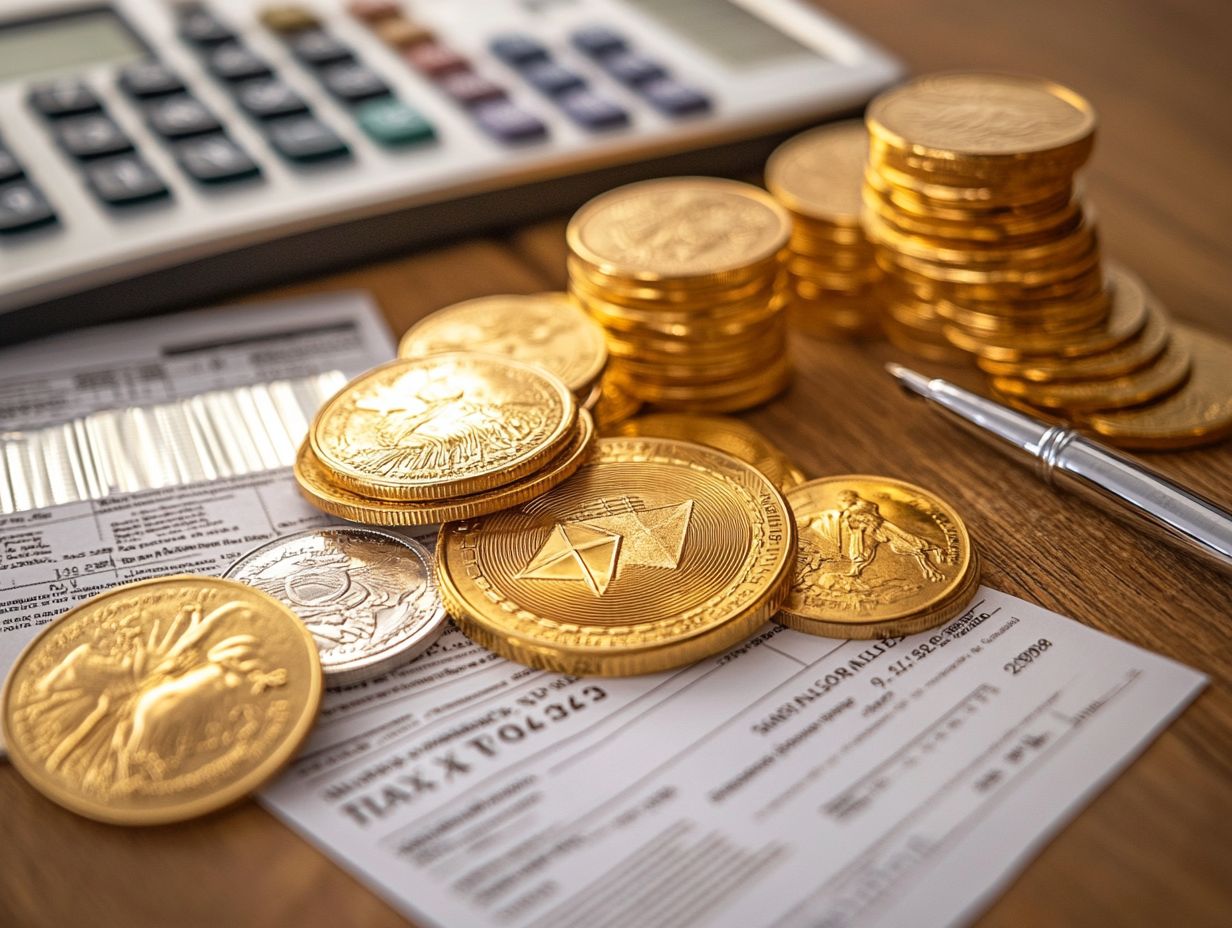
Collaborating with a tax professional can provide invaluable insights as you navigate the intricate tax implications tied to your precious metals investments. These experts have a deep understanding of ever-evolving IRS regulations, ensuring you not only comply with tax laws but also seize potential savings.
By analyzing your unique financial situation and investment goals, tax professionals can design customized strategies that optimize your tax outcomes. This tailored approach enables you to make informed decisions, maximizing your returns while minimizing liabilities.
They will guide you through the complexities of reporting requirements, exemptions, and potential deductions. This support ultimately gives you peace of mind and allows you to focus on expanding your precious metals portfolio.
Maximizing Tax Benefits
Boost your financial growth by maximizing tax benefits from your precious metals investments. Using a Precious Metals IRA can help you achieve this.
Accounts that let you postpone taxes allow for significant growth without immediate liabilities. Understanding the rules, like maximum amounts you can contribute each year and the age when you can withdraw without penalties, is crucial for making smart moves!
This strategy helps you plan and act effectively, ensuring your investments yield the best returns possible. Don’t miss out on maximizing your tax benefits!
Frequently Asked Questions
What are tax brackets for precious metals investors?
Tax brackets for precious metals investors refer to the different income levels that determine the percentage of taxes an investor will pay on their earnings from precious metals investments.
How do tax brackets for precious metals investors work?
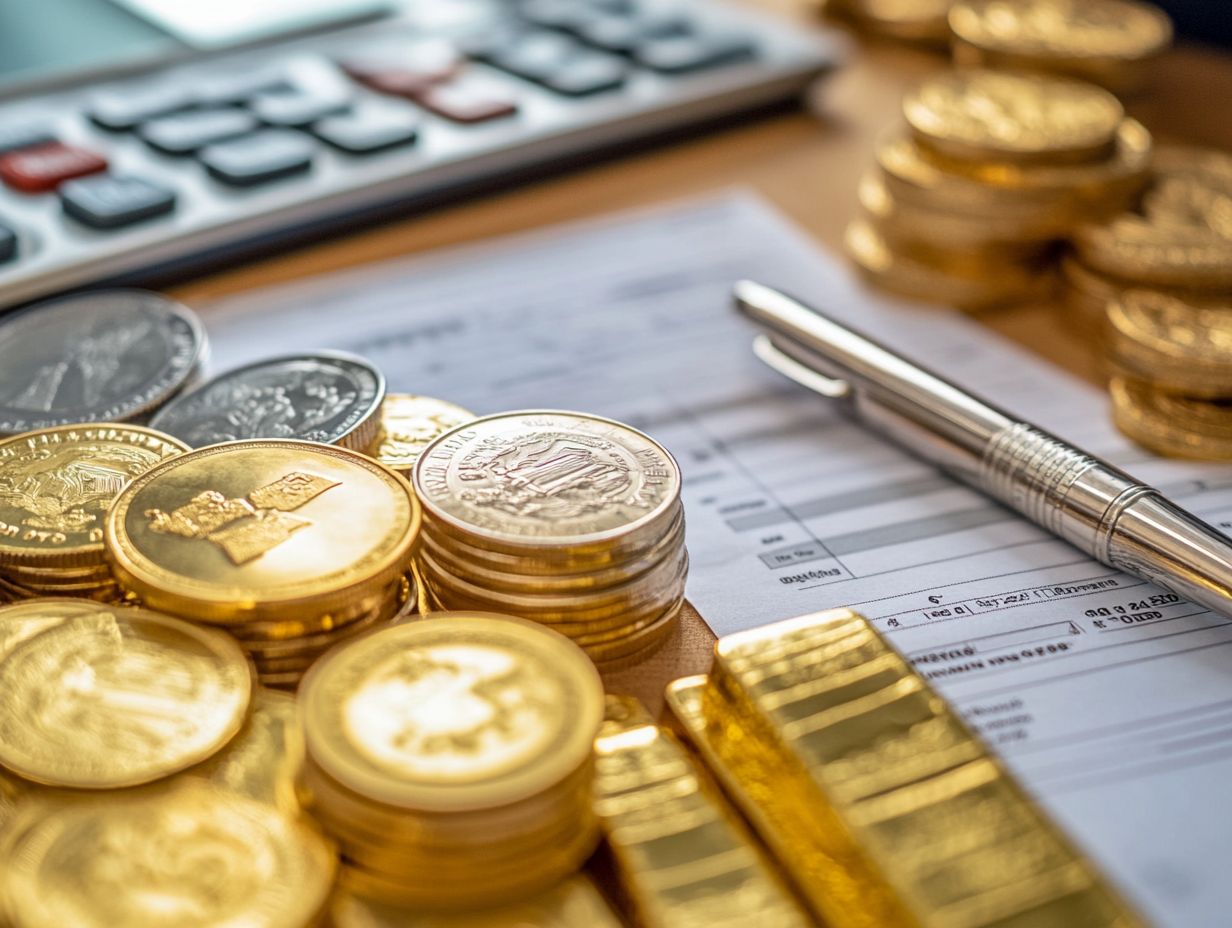
Tax brackets operate on a tiered system. Different income levels are assigned different tax rates. As an investor’s income from precious metals increases, they may move into a higher tax bracket and pay a higher percentage of taxes on their earnings.
What are the different tax brackets for precious metals investors?
The tax brackets for precious metals investors vary based on their total annual income. Currently, tax brackets for individuals in the United States range from 10% to 37%.
Can an investor lower their tax bracket for precious metals investments?
Investors can potentially lower their tax bracket for precious metals investments by maximizing deductions, contributing to retirement accounts, and utilizing tax credits.
What are the tax implications for precious metals investments in a higher tax bracket?
An investor in a higher tax bracket may pay a higher percentage of taxes on their earnings from precious metals investments. This can impact their overall return on investment and should be considered when making investment decisions.
Are there any tax breaks for precious metals investors?
Depending on an investor’s income and filing status, certain tax breaks may be available for precious metals investments. These can include deductions for investment expenses and tax-free exchanges for specific precious metals assets.










